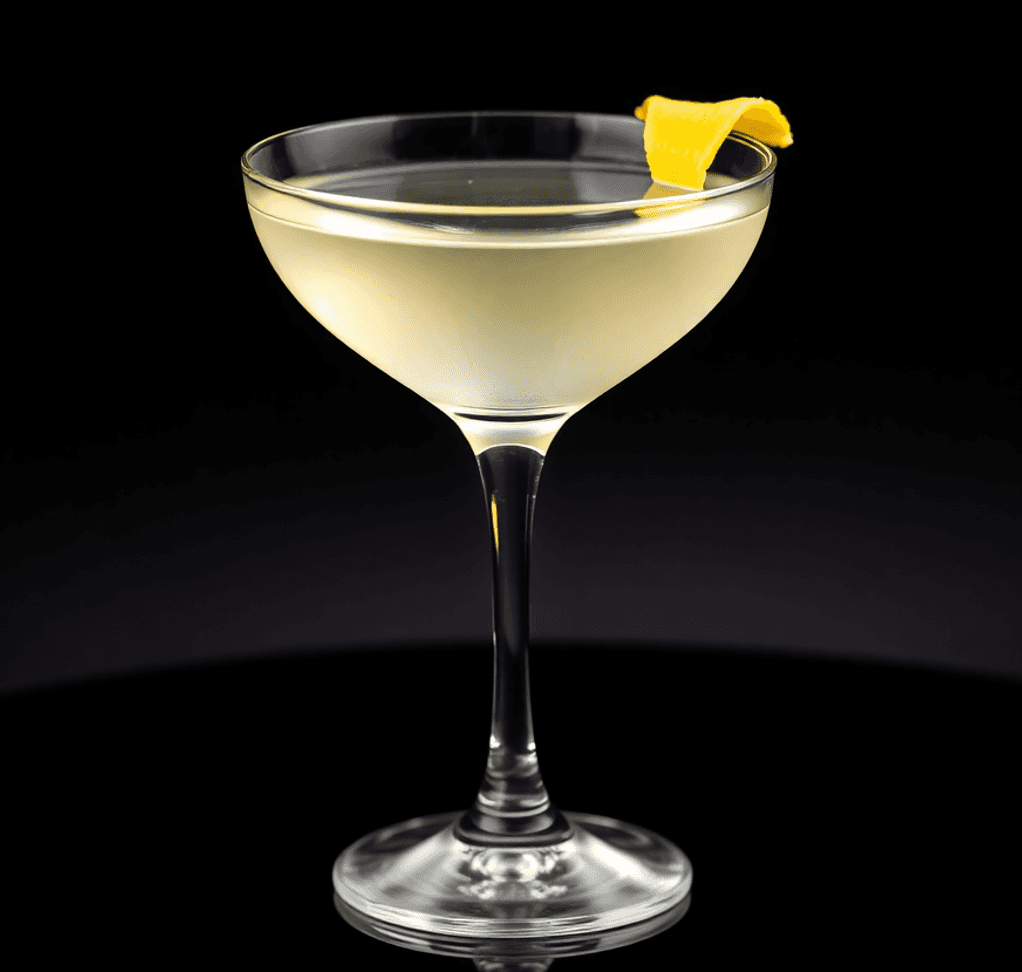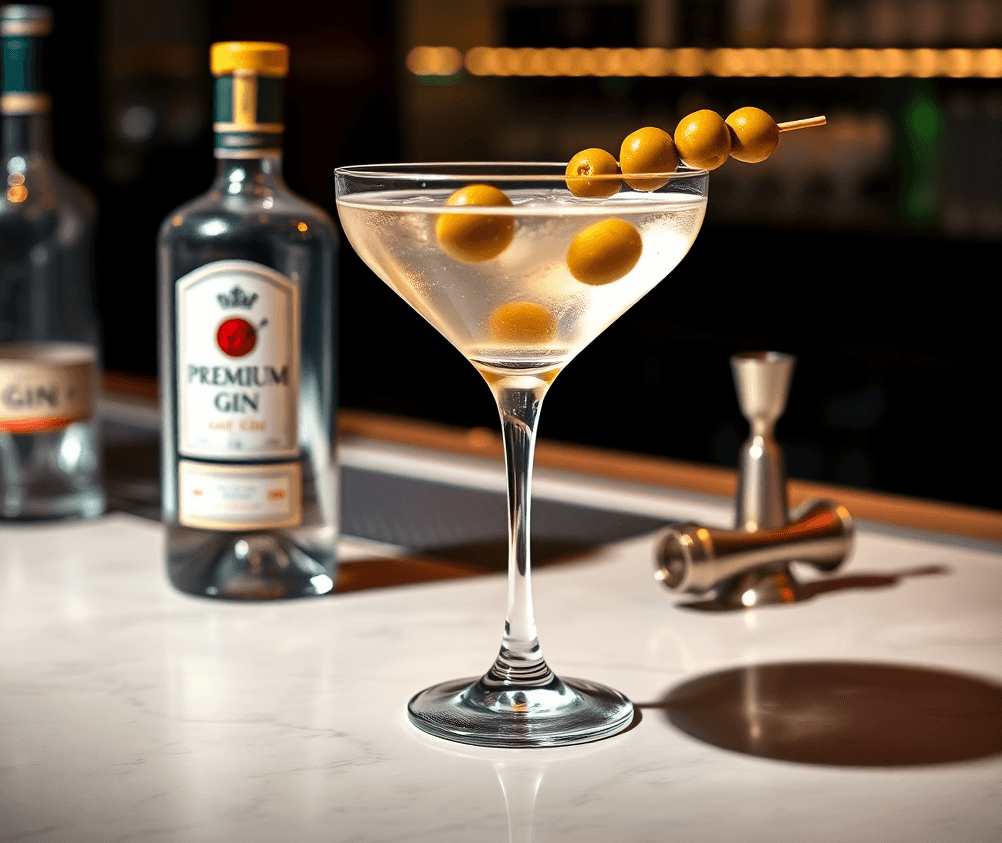Do you remember any time when you tried a cocktail and the taste just screamed at you that it was already shedding off its art of sophistication? That’s the dry martini. It’s not simply a drink; it’s a check on your sophistication level, a ceremony, and for many, a distinction of great taste. But the truth about dry martini, what exactly is that one, and what makes it so special?
You might have seen it gracefully mixed and matched together in old films, or had a proper, confident order “extra dry with a twist”, but you must ponder over, “What is meant by the word ‘dry’”? Is there a secret? Can gin always be the leading star, or can vodka also have a moment of glory? Then you have your top list of the most important things to know about the dry martini.
Respectively, let’s elaborate on these concepts and delve extensively into the dry martini, from its originality to its preparation, along with the modifications, and even the detailed guidelines of your order as a professional.
What Is a Martini, Anyway?
A classic martini is a very basic and beautiful mix, typically Gin and a little dry Vermouth, stirred with ice or shaken, and then it is put in a long glass with a piece of garnish that could be a lemon twist or an olive. Just a clean and crisp flavor – no sugary mixers, no umbrellas. That’s the martini.
While vodka martinis have been solid contenders during these years (to which a particular British secret agent might have contributed), the original martini has always been a gin thing.
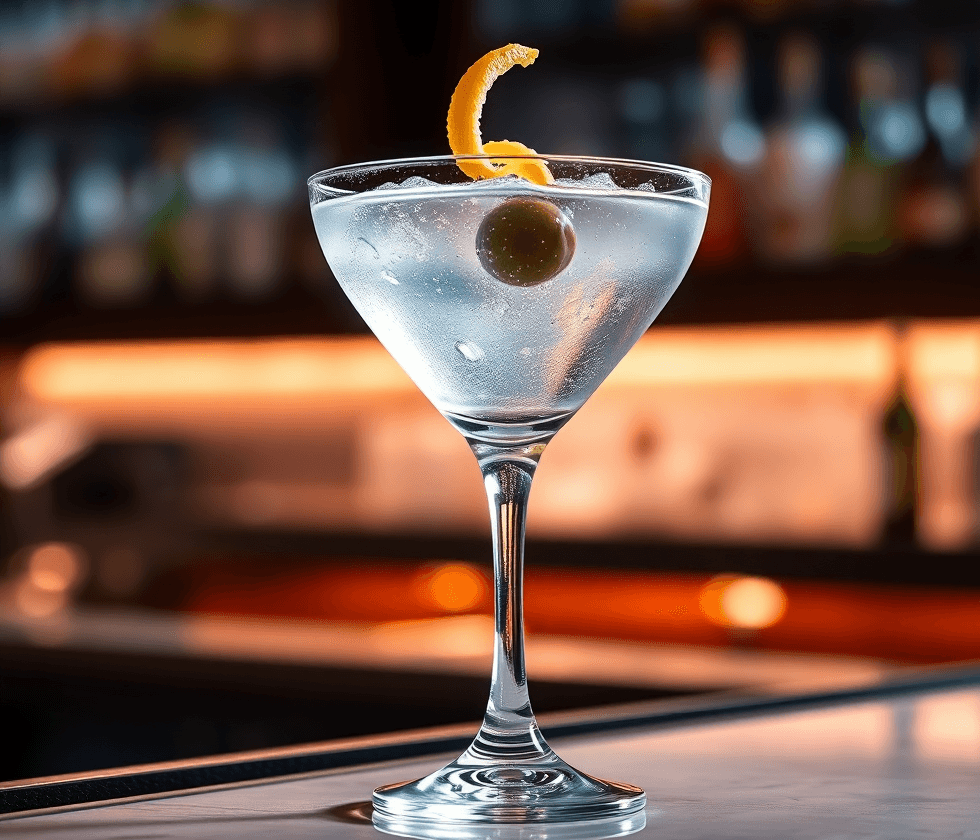
What Makes a Martini “Dry”?
A lot of people usually get lost here. It is the word “dry” in a dry martini that becomes the cause of the confusion. The dryness of a martini refers to the quantity of dry vermouth used. The drier the martini, the less vermouth it contains.
A few die-hard fans of the dry martini even reach the point of only showing the vermouth in the glass or rinsing it and throwing the liquid. The “extra dry martini” is an example of this pattern, which contains less vermouth, or at times, no vermouth at all.
So, What Makes a Martini Dry?
It’s not gin’s dryness, swear it! It’s a vermouth thing. Less vermouth = drier martini.
Classic Dry Martini Recipe (Gin Based)
In case you are ready to make one at home, the best choice for a dry martini recipe is this timeless option.
Ingredients:
- 2 ½ oz of gin (London Dry Gin is highly recommended).
- ½ of an oz of dry vermouth
- Ice
- Lemon twist or olive (martini garnish, your call)
Instructions:
- Get a mixing glass and take an amount of ice to fill it with.
- Put gin as well as vermouth into the glass.
- Slowly stir the mix using the back of a spoon for around 30 seconds.
- Pour into a chilled martini glass with the help of a strainer.
- Finish with a lemon twist or olive.
Here you go, it’s neat, sharp, and absolutely pleasing.
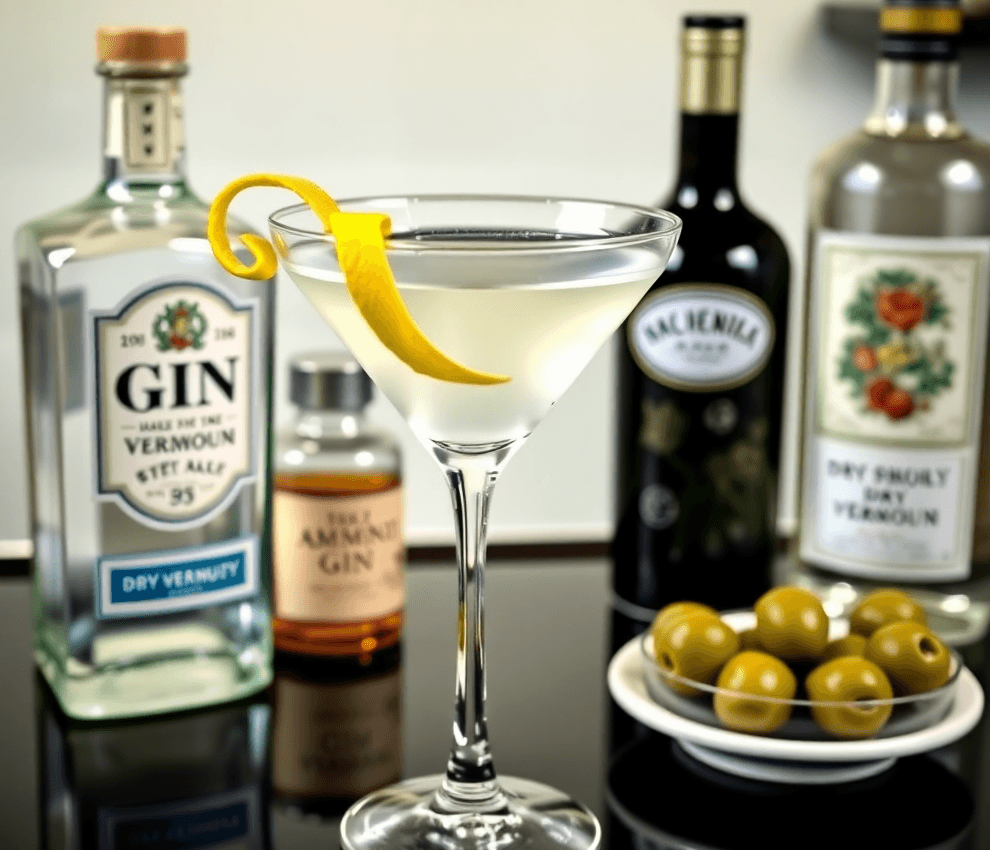
Vodka Martini with a Twist
If you don’t take to gin, forget your worries because you are definitely not alone in the modern crowd of drinkers who prefer a vodka martini with a twist over the classics. What you need to do is just follow the same steps and give up the gin in favor of vodka. Adding a lemon twist to your vodka has a fresh, tangy note that goes very well with the neutral aroma of the vodka.
Some bartenders may react badly, but let’s keep it real—flavor should come first and vodka martinis have certainly earned the respect of the bar.
Martini Garnish: Just a Slice of Lemon, Please
When they say “twists,” it shouldn’t be just about the appearance of martini garnishes. Letting a lemon twist glide on the top of the drink brings the essence of the citrus oils in, creating a tangy fragrance that at the same time, dries the gin- and vermouth’s sharpness. But, as a matter of fact, the olive provides a salty taste that many people simply love.
Well, I was a lemon twist fellow. I recall a time when I crushed the olive when I was making a martini. I can tell you it was a major mistake that turned the drink into an overly salty mixture. Trust me, garnish is a big deal.
Dry vs. Dirty: What’s the Issue Here?
People often confuse dry martinis with dirty ones. They are not similar, however.
- Dry flavor in a drink is when a small amount of vermouth has been added.
- The dirty drink is the one that has olive brine in it, which makes it look cloudy and has an extra salty taste.
Here is a dirty martini recipe that you might find appealing:
- 2 ½ oz gin
- ½ oz dry vermouth
- ½ oz olive brine
- Garnish: 2 olives
Mix the ingredients with ice, then strain. The result is a very rich, strong, and extremely tasty flavor.
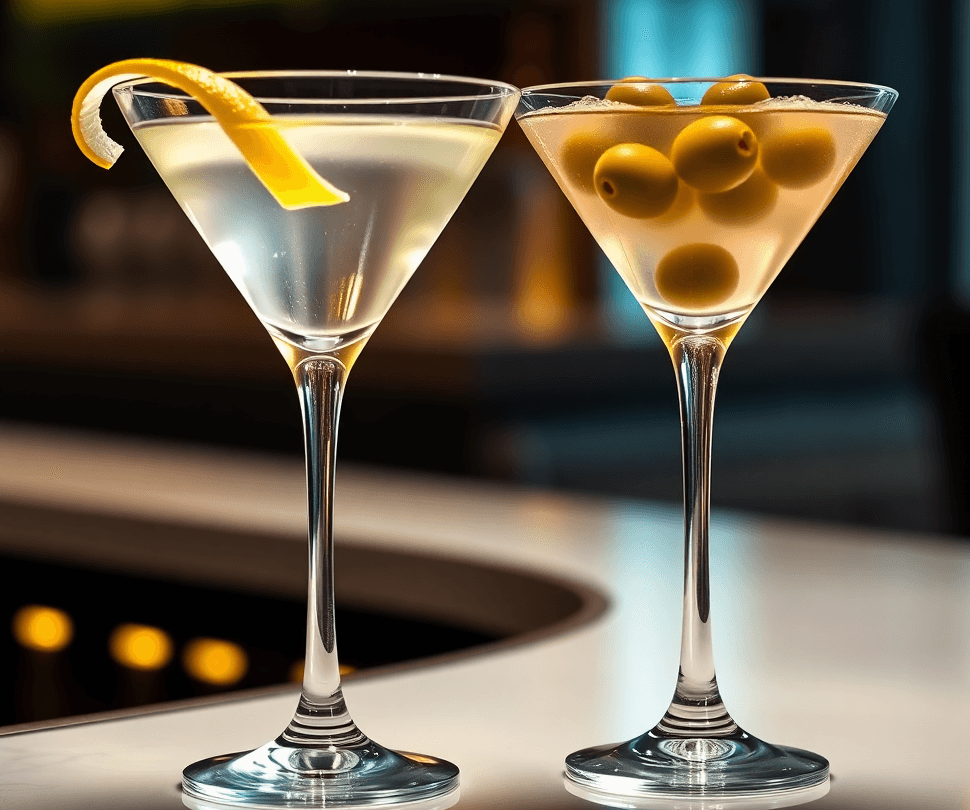
On the Gin Martini Recipe
For the purists, the gin martini recipe is the one who makes the decision. They prefer to start with quality gin (not any less than Bombay Sapphire, Tanqueray, or Beefeater), add dry vermouth, stir—don’t shake—and garnish. The result is clean, botanical, and herbal in the background. A well-prepared gin martini can definitely improve your mood for the entire evening.
A True-Life Story: The First Dry Martini I Had
I can still vividly remember that day when I had my first dry martini, I was in a jazz club in Chicago, pretending to fit in among the regulars. I passed by the bartender and whispered to him “the one James Bond drinks, please”. The bartender took a look at me and replied, “Gin or vodka? Shaken or stirred? Twist or olive?”
I was petrified.
But then, he smiled and said, “I got you, my favorite.” It was a gin martini, extra-dry, with a lemon twist. From my first sip, my outlook on cocktails changed instantly. Fresh, cold, and sure. That’s it. I’ve been obsessed with it ever since.
Asking for a Dry Martini Like a Pro
If you are looking to get one at the bar, this is a sure shot way to appear as you are in the know.
“I’ll take a dry gin martini, stirred, and a lemon twist.”
Feeling even more adventurous?
“Give me an extra dry Bombay martini, stirred, with a twist.”
The bartender will be on the same page as you, and you will feel like a king.

Conclusion:
So, how does one make a dry martini? It’s a lot more than just a beverage—a lifestyle projection, if you think about it. Simple yet very flavorful, traditional yet extremely versatile. Whether you are left with gin or vodka, or you prefer an olive or a twist, the dry martini is still considered to be one of the grandest cocktails ever made.
Getting acquainted with the easy steps, doing a bit of research, can bring you possibly the most perfect version of the drink that everyone will recognize as your signature. And don’t forget – the simple things in life are always one of the greatest.
FAQs
1. Can I make a dry martini with vodka instead of gin?
You absolutely can! A vodka martini with a twist is a trendy choice. Just change it up—gin is out, vodka is in, everything else remains the same.
2. What’s the best garnish for a dry martini?
The best garnish indeed depends on individual tastes. Lemon peel adds a hint of citrus, while olive gives a tangy rich taste. Besides, some people use cocktail onions for a Gibson martini.
3. How dry is an extra dry martini?
An extra dry martini has very little or no vermouth. A small portion of vermouth may be added to the glass by some bartenders to coat it before throwing it and then the gin or vodka poured in.
4. Is it better to stir or shake a dry martini?
Normally, people stir a dry martini if they want it crystal clear to look. Shaking gives a drink a cloudy and airy appearance. However, if you like your drinks colder and somewhat diluted, then you can go ahead and shake them. James Bond most likely would.

